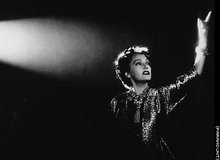Topic: Narrative Conventions
Using one of the two films we’ve seen in class (la Jetee, Distant Voices, Still Lives) write a brief discussion of how the film both makes use of and subverts basic narrative conventions.
We have talked in class about some conventions common to all narratives, both visual and written: narrative structure (how events are ordered), closure, mode of address, hierarchy of characters and point of view. We’ve also spoken about some conventions unique to film: the use of incidental sound, music, and editing. You do not have to discuss every one of this elements in your paper---pick the ones you find more most important or interesting in the film you are analyzing.
The basic point of this paper is to descriptively observe these features and begin to think about their effects. Think about how the use of these conventions position the viewer: to see some things, and not others, to pay close attention to some things, and less attention to others, to sympathize with a character, or not, to accept or agree with a particular way of looking at the world, etc. In other words, devote some time to reflecting on your own practices as a film viewer/reader: how they have been formed and how the film you are writing about may challenge them.
In order to make your points you may wish to make quick reference to other texts we’ve looked at in this class, such as the short story, “We Kill What We Love,” (for non-linear narrative), or maybe the animated video, The Inner Life of a Cell (for how music cues viewer perception) or even some of the work by Young Hae-Chang Heavy Industries (for differences between film and literature if you get that ambitious). You may also want to quickly describe a scene in a mainstream hollywood film as a point of comparison and contrast, too. These are all fine. But remember, for this paper you don’t have to do and “extra” research.
This assignment should be very simple on one level and very challenging on another. Although you are just looking and describing, you’re also looking at things that may have previously been invisible to you and describing things in a way that may be unfamiliar. Think of this first paper as a trial run: a place to “try out” some of the ideas we’ve been talking about in class, a place to “try out” your “new” observational skills.
Don’t forget to title your essay. A title is one of the elements which distinguishes a piece of formal writing from an informal series of notes. Your title should reflect something pertinent to your discussion. "Paper One," "Essay," "Film Paper," and the like are not adequate essay titles. Neither is the title of the film you are writing about.
Length: 3 1/2 to 4 typewritten double-spaced pages.
All papers must be stapled or they will not be accepted.
Due: March 6
Saturday, March 3, 2007
Subscribe to:
Post Comments (Atom)
































2 comments:
i really dont know how to get started. Do i start by talking about the muffled voices for sound in the movie La Jete? and the singing in Distant Voices?
You are only writing about ONE film. So pick which one.
Then look at your list of narrative conventions: remember from the board last time? Both those that are common to all narrative (structure, character, closure, etc.) and those relating to film (sound, etc.)
Now look at how your film handles each one. Are some more important? More interesting? Figure out which ones you want to write about.
Now you can start your paper. Perhaps you can begin by talking about narrative conventions, which ones are more conventional etc. Then you can introduce your discussion of your film and how it both uses/breaks these conventions.
When you are through describing this you can talk a bit about your own "reading" practices...how you "read" films and other narratives: what expectations you have, assumptions you make. Did working with a narrative that didn't conform to your expectations reveal those expectations to you? What did you learn about your own reading/viewing practices?
(Here you might want to look over some of the student logs for things about passive vs active positions for viewers, the way the films may tell you what to think vs force you to think, etc).
Hope this helps. If you need more help write a log about this over in the Student Log section. You can use your logs for this kind of work!!!
Post a Comment